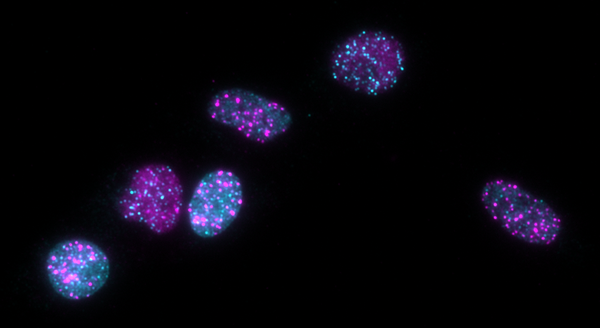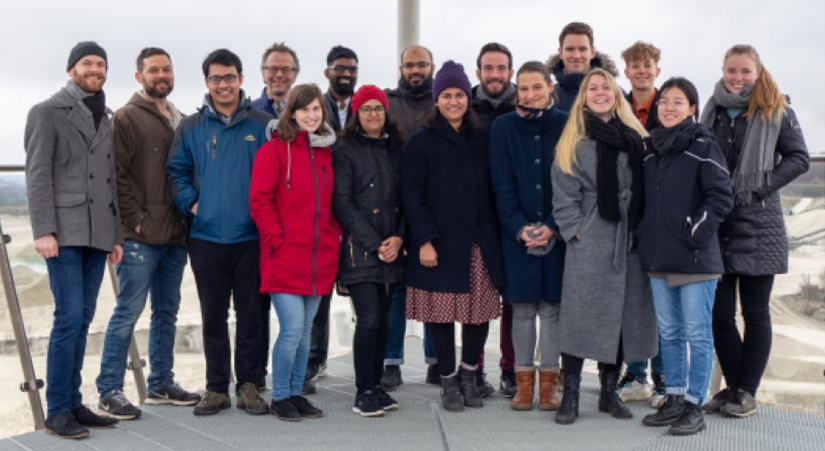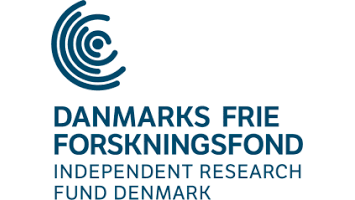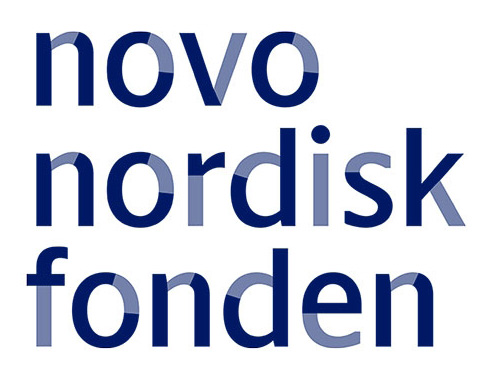Sørensen group
Our genome is the foundation for life that must be guarded to avoid dysfunction and disease. We aim to understand how mammalian cells ensure genome stability. The ability to protect and maintain a stable genome is crucial to avoid numerous diseases including neurological disorders and cancer.

The overarching goal of my research is to understand mechanisms underlying maintenance of genome stability in mammalian cells, and how impairments of these mechanisms cause diseases such as cancer and neurological disorders. Based on this foundational understanding, we aim to find new targets mainly for cancer therapy as well as improve current therapies.
Cancer cells use self-inflicted DNA breaks to evade growth limits imposed by genotoxic stress
- Genotoxic therapy such as radiation serves as a frontline cancer treatment, yet acquired resistance that leads to tumor reoccurrence is frequent.
- We found that cancer cells maintain viability during irradiation by reversibly increasing genome-wide DNA breaks, thereby limiting premature mitotic progression. We identify caspase-activated DNase (CAD) as the nuclease inflicting these de novo DNA lesions at defined loci, which are in proximity to chromatin-modifying CCCTC-binding factor (CTCF) sites.
- Loss of CAD activity impairs cell fate decisions, rendering cancer cells vulnerable to radiation-induced DNA double-strand breaks. Our observations highlight a cancer-selective survival adaptation, whereby tumor cells deploy regulated DNA breaks to delimit the detrimental effects of therapy-evoked DNA damage.
Read paper: Cancer cells use self-inflicted DNA breaks to evade growth limits imposed by genotoxic stress.
WEE1 kinase guards genome stability by suppressing a cellular nuclease that promotes DNA degradation when replication is challenged
- Cellular feedback systems ensure genome maintenance during DNA replication. When replication forks stall, newly replicated DNA must be protected by pathways that limit DNA nuclease attacks.
- We discovered that WEE1 kinase has a major role in guarding against DNA degradation at stalled replication forks. WEE1 limits a CDK2-DNA2 pathway that if left dysregulated attacks DNA at replication forks. Thus, clinically relevant WEE1 inhibition triggers nascent DNA degradation.
- WEE1 inhibitors are under development as anti-cancer treatment. Our new discoveries may improve WEE1-dependent therapeutic strategies to specifically eradicate cancer cells that frequently harbor elevated DNA replication stress.
Read paper: WEE1 kinase protects the stability of stalled DNA replication forks by limiting CDK2 activity
Chromatin structure is guarded by a single methylation group on Histone H4
- Our genome is embedded in chromatin, which consists of DNA wrapped around histone molecules termed Histone H3, H4, H2A and H2B. Consequently, cell proliferation and DNA repair depend on access to the genome, which can be mediated by modifications of histone proteins.
- We discovered a new role of Histone H4 when it is modified by the addition of single methyl-group at residue Lysine 20 (K20). This change from H4 K20me0 to H4 K20me1 facilitates chromatin openness and accessibility by disrupting chromatin folding.
- Thus, accumulation of Histone H4 K20me1 demarcates highly accessible chromatin at very active genes, and this is maintained throughout the cell cycle. Unmethylated (H4 K20me0) and trimethylated (H4 K20me3) chromatin is much more compacted.
- Altogether, we show how the methylation state of a single histone H4 residue operates as a focal point in chromatin structure control to mediate transcription of highly active genes.
CtIP (RBBP8) genetic variants may predispose to early-onset breast cancer by compromising genome integrity
- Mutations in genes governing genome stability predisposes to hereditary breast and ovarian cancer. However, in most patient cases the underlying cause of the familial cancer is unknown. With the aim of identifying new candidate genes, we examined early-onset breast cancer patients negative for BRCA1 and BRCA2 pathogenic variants.
- We focused on CtIP (RBBP8 gene), which mediates HRR through the end resection of DNA double-strand breaks (DSBs). Notably, a subset of early-onset breast cancer patients exhibited a number of rare germline RBBP8 variants.
- Functional analysis revealed that these variants were deficient in genome maintenance. Thus, their expression led to deleterious nucleolytic degradation of stalled DNA replication forks in a manner similar to that of cells lacking BRCA1 or BRCA2.
- Taken together, our work identifies CtIP as a critical regulator of DNA replication fork integrity, which, when compromised, may predispose to the development of early-onset breast cancer.
Read paper: Germline RBBP8 variants associated with early-onset breast cancer compromise replication fork stability
What causes familial breast and ovarian cancer development?
- What are the genes driving familial breast and ovarian cancer
- Which genetic variants (mutations) are predisposing to cancer
- Can we develop accurate knockin modeling of germline and cancer mutations
- What is the function of the predisposing genes
- When predisposing genes are mutated, do cancer cells become sensitive to particular treatments
New mechanisms underlying genome maintenance
- Kinase dependent cell cycle control in S and G2 phase with focus on WEE1 and PKMYT1 kinases, two high-profile targets in oncology
- How does WEE1 and PKMYT1 kinase signaling curb CDK activity
- What are the key downstream targets of CDK activity, especially when CDK activity is dysregulated by WEE1 or PKMYT1 ablation
- DNA damage checkpoint control with focus on the highly cancer relevant checkpoint in G2 phase
- Which factors maintain G2 cell cycle checkpoint control
- Can we override the G2 checkpoint to sensitize cancer cells to therapy
Most projects initiate with unbiased large-scale analysis to identify new unexpected factors in genome maintenance. We develop high throughput functional genetic screens based on CRISPR- or siRNA-libraries. To this end, we use the automated systems in the BRIC High Throughput Cell-based Screens/High Content CRISPR Screening core facility. In addition, we frequently employ proteomic and phospho-proteomic analysis to characterize interactomes and pathways of newly identified factors.
Furthermore, we focus on developing new methods to unravel genotype-phenotype connections using the CRISPR-Cas9 genome editing technology. We do this both at the gene level and – most importantly – at variant level. Thus, we engineer cell lines, including stem cells, to exactly re-create patient mutations for precise modeling of cancer. This is a major challenge for the scientific and clinical communities, and our approaches may have marked impacts in the future.
Selected publications
BRIAN D. LARSEN, JAN BENADA, PHILIP YUK KWONG YUNG, RYAN A. V. BELL, GEORGE PAPPAS, VACLAV URBAN, JOHANNA K. AHLSKOG, TIA T. KUO, PAVEL JANSCAK, LYNN A. MEGENEY, SIMON J. ELSÄSSER, JIRI BARTEK, & CLAUS S. SØRENSEN. Cancer cells use self-inflicted DNA breaks to evade growth limits imposed by genotoxic stress. SCIENCE. 28 Apr 2022. Vol 376, Issue 6592. pp. 476-483. DOI: 10.1126/science.abi6378
Elbæk CR, Petrosius V, Benada J, Erichsen L, Damgaard RB, Sørensen CS. WEE1 kinase protects the stability of stalled DNA replication forks by limiting CDK2 activity. Cell Rep. 2022 Jan 18;38(3):110261. doi: 10.1016/j.celrep.2021.110261. PMID: 35045293.
Shoaib M, Chen Q, Shi X, Nair N, Prasanna C, Yang R, Walter D, Frederiksen KS, Einarsson H, Svensson JP, Liu CF, Ekwall K, Lerdrup M, Nordenskiöld L, Sørensen CS. Histone H4 lysine 20 mono-methylation directly facilitates chromatin openness and promotes transcription of housekeeping genes. Nat Commun. 2021 Aug 20;12(1):4800. doi: 10.1038/s41467-021-25051-2. PMID: 34417450; PMCID: PMC8379281.
Zarrizi R, Higgs MR, Voßgröne K, Rossing M, Bertelsen B, Bose M, Kousholt AN, Rösner H, Network TC, Ejlertsen B, Stewart GS, Nielsen FC, Sørensen CS. Germline RBBP8 variants associated with early-onset breast cancer compromise replication fork stability. J Clin Invest. 2020 Aug 3;130(8):4069-4080. doi: 10.1172/JCI127521. PMID: 32379725; PMCID: PMC7410048.
Benada J, Ejlertsen B, Sørensen CS. Overcoming Treatment Toxicity through Sequential Therapy. Cancer Cell. 2019 Jun 10;35(6):821-822. doi: 10.1016/j.ccell.2019.05.006. PMID: 31185206.
Galanos P, Pappas G, Polyzos A, Kotsinas A, Svolaki I, Giakoumakis NN, Glytsou C, Pateras IS, Swain U, Souliotis VL, Georgakilas AG, Geacintov N, Scorrano L, Lukas C, Lukas J, Livneh Z, Lygerou Z, Chowdhury D, Sørensen CS, Bartek J, Gorgoulis VG. Mutational signatures reveal the role of RAD52 in p53-independent p21-driven genomic instability. Genome Biol. 2018 Mar 16;19(1):37. doi: 10.1186/s13059-018-1401-9. PMID: 29548335; PMCID: PMC5857109.
Nielsen FC, van Overeem Hansen T, Sørensen CS. Hereditary breast and ovarian cancer: new genes in confined pathways. Nat Rev Cancer. 2016 Sep;16(9):599-612. doi: 10.1038/nrc.2016.72. Epub 2016 Aug 12. PMID: 27515922.
In the media
To escape radiation, tumor cells reversibly damage their DNA
29.04.2022 by BioWorld.
Tumor cells activate DNA breaks, protecting them from death due to treatment-induced damage
29.04.2022 by Medical Xpress.
Cancer Cells Break Own DNA to Defend Against Radiation
28.04.2022 by TheScientist.
Research discovery reveals how a cancer cell resists radiation treatment
28.04.2022 by UCPH.
Danske forskere finder nyt brystkræft-gen hos unge (in Danish)
13.05.2020 by Rigshospitalet.








